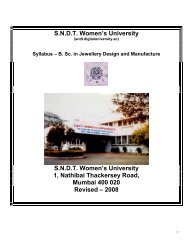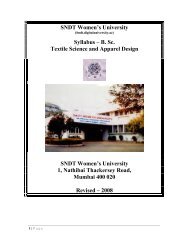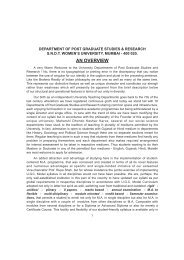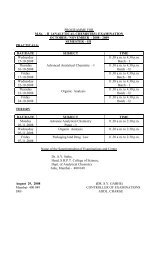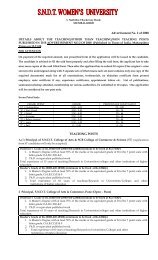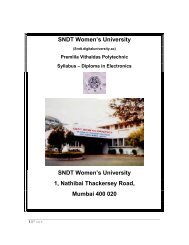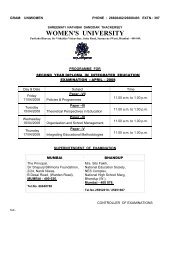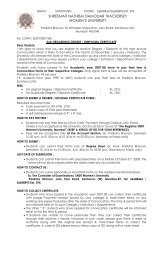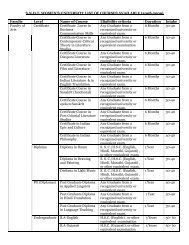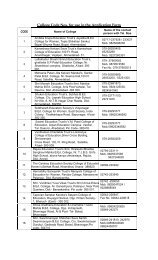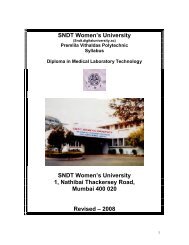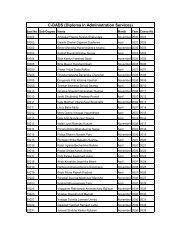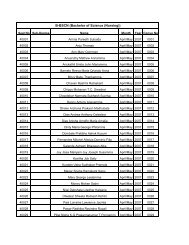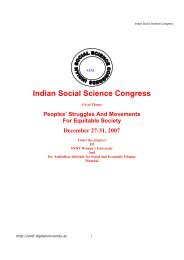XXXI Abstracts Part 1 page 1-189
XXXI Abstracts Part 1 page 1-189
XXXI Abstracts Part 1 page 1-189
Create successful ePaper yourself
Turn your PDF publications into a flip-book with our unique Google optimized e-Paper software.
Vegetable 4 4000 200(fresh wt)<br />
Food Grains20 5000 80(Grain)<br />
Pulses & fodder 10 300 100<br />
Sweet Sorghum20 5000 400<br />
Nitrogen 10 3000 100<br />
Fixing Species<br />
94 ha 2800 1120<br />
dry matter coal equivalent<br />
biomass energy<br />
The water requirement is based on annual average water availability. Therefore, irrigation system should be<br />
designed for additional 50% irrigation delivery<br />
The primary gram sabha, which adopts land use and water allocation policy according to proposed criteria, would<br />
get preferred EA allotment under the NREGA (National Rural Employment Guarantee Act). Additional employment<br />
assistance (EA) would be made available as required to create food security & production of biomass energy of different<br />
categories as explained earlier.<br />
Next step is to identify privately owned land of low productivity, preferably located near irrigated areas. Opportunity<br />
should be explored for extending irrigation services & augmentation of water sources.<br />
Focus should be on creating awareness of opportunities for creating livelihood security & building biomass energy<br />
resource base through appropriate land use & priority water allocation. The process of negotiation can then be initiated for<br />
benefit sharing between poor/ disadvantaged & asset holding house holds. The focus in pilot projects should be on<br />
establishing that equitable distribution of benefits of new assets and productivity improvement, enhancing water use<br />
efficiency & building new asset will benefit every body so that distribution can be a positive sum game.<br />
In practice, time lags in building capabilities are unavoidable. The benefit sharing agreements cannot be effective<br />
till there is a consensus within the community on priority of land use, water allocation and use of EA. It is also a matter of<br />
attitudinal change and building enduring institutions for conflict management, enforcing rules regarding benefit sharing. This<br />
calls for priority allocation of EA and credit to bring about cost reduction and enhancing the market share of the local<br />
produce in the rural, urban and small town market. Management capabilities also need to be acquired which takes time. The<br />
revolving fund as an interest free loan is needed to bridge the income gap during the time required to take care of the time<br />
lag.<br />
Building Nature’s Capital<br />
Protection and care is vital for building and sustaining the bioresource base, otherwise, uncontrolled grazing and<br />
over exploitation will destroy the vegetation. Depositors [asset holding households such as land owners], can contribute to<br />
building the bio mass bank by depositing wood, bamboo, fibers in the biomass bank. This would ensure long term stability of<br />
supply of biomass needed for value added processing in biomass based industries.<br />
The biomass bank and leasing company are the social instruments to motivate the rural poor, small farmers and<br />
artisanal enterprises to use EA [employment assistance] and credit to build ‘natural capital’ in the form of biomass and solar<br />
energy [in various forms i.e thermal, hydro, wind, small hydro].<br />
Generally land owners are indifferent about the building of the biomass energy resource base because of the<br />
degraded condition of land and the meager income they get from the land due to encroachment by the poor who utilize the<br />
biomass for meeting their fuel wood needs .The situation would change radically if groups of poor in the neighbourhood<br />
,organized as labour co-operatives micro credit groups SHG[self help groups], are entitled to get EA [employment<br />
assistance] and use it for land development, fencing and soil improvement for producing energy crops and establishing<br />
plantations. Benefit sharing agreements will motivate them to take responsibility of protection, and giving attention to<br />
enhancement and sustenance of high levels of productivity and water use efficiency. The depositors can participate by<br />
providing capital on terms, which are mutually beneficial, to the groups of women and labour cooperatives, which need<br />
investment for irrigation to achieve desired levels of productivity of biomass.



